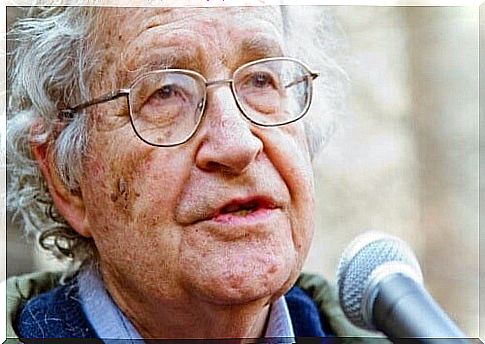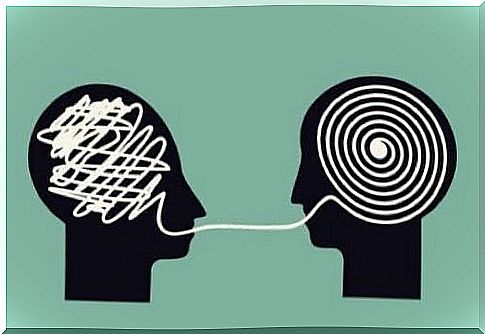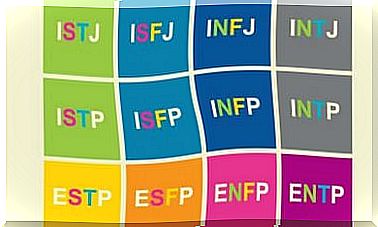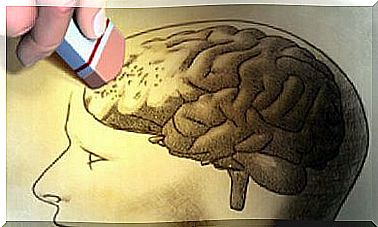The Linguistic Theory Of Noam Chomsky

Noam Chomsky’s linguistic theory is one of the most important theories relating to human language. It is also known as generative or biolinguistic grammar.
According to this system of ideas, there is an innate mental structure that allows us to understand and produce any statement in any natural language we know. Thanks to this, the process of acquisition and mastery of language would require little processing by the brain and would develop almost automatically (1).
Despite its importance, Noam Chomsky’s linguistic theory is currently the subject of controversy. Many academics, in fact, do not see it as an optimal explanation for language acquisition and its functioning.
This criticism is linked to two aspects. The first would concern the way in which Chomsky explains the inclusion of concepts in the mind; the second is due to the fact that Chomsky believes that some syntactic principles are universal, known in all languages (2).
General aspects of Noam Chomsky’s linguistic theory
Chomsky’s first distinction concerns linguistic competence and linguistic performance. Competence corresponds to the ability of an ideal speaker-listener to associate sounds and meanings according to unconscious and automatic rules.
On the other hand, with linguistic performance we mean the interpretation and understanding of sentences in accordance with competence, but also based on extra-linguistic principles. Some might be memory or belief restrictions, for example (3).
A curious aspect of generative grammar is that it is primarily aimed at ideal speaker-listeners. In other words, to those people who perfectly know the language and who never make mistakes, as they are not influenced by distractions or context limitations (4).
It therefore appears that Chomsky’s linguistic theory is a theory of competence and not of performance. This is because it does not explain the production or perception of language in everyday circumstances.
Chomsky’s linguistic theory explains language in abstract and ideal states, which are difficult to translate into the actual use of language.

Linguistic theory and generative grammar
In the work The structures of syntax , Chomsky proposes the existence of a mental device through which any sentence of any natural language can be generated, linking meanings and sounds.
This is the language acquisition device, which has three components: syntactic, semantic and phonological.
Synthetic component
This component has a base and a transformational component. First, the basis consists of a categorical component and the lexicon.
According to generative grammar, lexical entries closely correspond to arrays of semantic, syntactic and phonological characteristics that can be associated with different words in different languages (4).
In this sense, the lexicon would be made up more of concepts than of terms, which already existed before their associations with other words.
On the other hand, the categorical component is made up of a set of rules that allow the rewriting of sentences or sets of sentences, so as to be able to derive derivations.
These rules are known as rules of sentence structure and belong to transformational grammar, considered by the same author insufficient as a global grammatical theory, but adequate to explain a part of the acquisition and functioning of language.
Secondly, the transformational component implements the transformational rules. They involve changes in the structure of the chains already generated by the sentence structure rules.
Semantic component
The semantic component consists of a non-specific set of semantic rules that assign meanings to the deep structure. The aim is to transform a profound structure into a representation of meaning (2).

Phonological component
This component is formed by a set of morphophonemic rules that regulate the conversion of morphemes into phonemes. Therefore, to convey the idea, they regulate the pronunciation of words and sentences (5).
Furthermore, according to linguistic theory, all the rules that allow the understanding and production of language are logical and unconscious. These rules would determine, for example, that in the English language the combination ig is pronounced [ay] when it precedes the end of a “nasal” word, as in the case of sign [sayn].
Conclusions
In the 1950s Chomsky proposed his theory to explain the acquisition, understanding and production of the spoken language.
This theory assumes that the mother tongue is acquired automatically and in the same way in all human beings. For this reason, Chomsky’s linguistic theory has been criticized for lack of realism and is a source of controversy.








